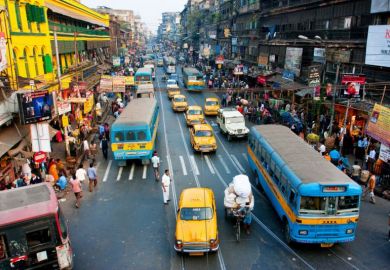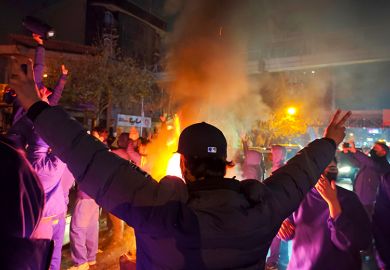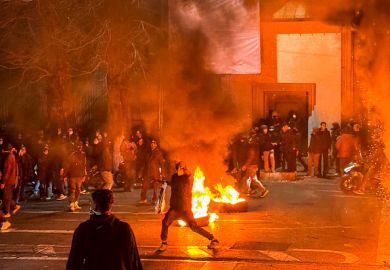In recent weeks, some of India’s best universities have witnessed intense student protests against the Citizenship (Amendment) Act (CAA), seen by many as discriminatory towards India’s minorities, particularly Muslims. Protesting students have faced violence by the police and right-wing groups.
In mid-December 2019, at Aligarh Muslim University, which has the official status of a minority educational institution, the police used tear gas and rubber bullets on protesting students when they started throwing stones. At Jamia Millia University, also a Muslim minority institution, the police claimed to have chased violent protesters on to the campus, whereupon police officers entered the library, trashed bookcases and other furniture and beat up students.
Finally, at Jawaharlal Nehru University, known as a leftist stronghold, it was reported that masked men and women belonging to right-wing groups entered the residential campus and beat up several students and even faculty members while campus security and the police stood by doing nothing.
Despite such attacks, student protests have continued and spread to several other universities. It would appear that the protests are primarily against the CAA, but other factors are also at play. Many students may be protesting because they are increasingly concerned about their own life chances.
The country is witnessing an economic slowdown and “jobless growth”. This is a big problem given that nearly half of India’s 1.2 billion people are under 25 years of age, with more than 37 million students enrolled in various higher education institutions.
It is known that India’s colleges impart, at best, an average quality of education. As a result, millions of graduates remain unemployed or underemployed for long periods of time. According to one study, those with an undergraduate degree are more than twice as likely to be unemployed than the national average, and women are more likely than men to be affected.
In a recent newspaper column, Arvind Subramanian, chief economic adviser to the government of India between 2004 and 2008, expressed concern that India’s supposed demographic dividend may be turning into a “demographic wasteland”. While acknowledging the routine failings of India’s higher education, he also drew attention to the growing “violence and physical and psychological insecurity” of students, which “only adds more hopelessness to their educational years and to their sense of the future that awaits them”.
Yet the protests have dispelled two popular, unflattering narratives about India’s young people. The first is that they are indifferent to politics and are unwilling to take up larger causes. While their parents (as well as many political leaders) would rather that they focused only on their education and careers, the ongoing protests have surprised many by coming to involve even students from academic institutions without a history of student activism, such as the Indian Institutes of Technology, Indian Institutes of Management and even private universities such as Manipal University, which counts Microsoft CEO Satya Nadella as an alumnus.
It is all the more commendable that their protests have been extremely civil and almost entirely non-violent despite provocations and despite their becoming targets of violence.
The second narrative that has been dispelled is that India’s young people would not stand up for each other because they are divided by caste, religion, language and gender to an extent that the post-independence generation – which grew up with the idea of India as a multi-ethnic melting pot – was not. While these divisions remain, and are still important, India’s students deserve credit for seeming – despite their education or, perhaps, because of it – to have overcome them, to come together in growing numbers to protest against the CAA.
The multi-ethnic character of India’s student protests, combined with the significant participation of women (including from minority communities) should be celebrated as a non-material form of demographic dividend. Such acts of solidarity show glimpses of a country and a people that appeared to many to be a fading memory.
A recent editorial in the Indian Express put it rather well. “Demographic dividend isn’t just about a larger workforce – it also means more young people with courage of their conviction. Applaud that.”
Pushkar is director of the International Centre Goa, Dona Paula (Goa). These are his personal views.
POSTSCRIPT:
Print headline: Courage of their convictions
Register to continue
Why register?
- Registration is free and only takes a moment
- Once registered, you can read 3 articles a month
- Sign up for our newsletter
Subscribe
Or subscribe for unlimited access to:
- Unlimited access to news, views, insights & reviews
- Digital editions
- Digital access to THE’s university and college rankings analysis
Already registered or a current subscriber?








